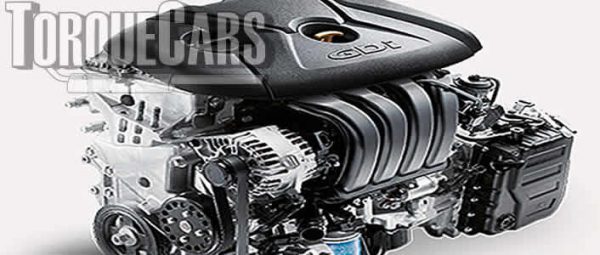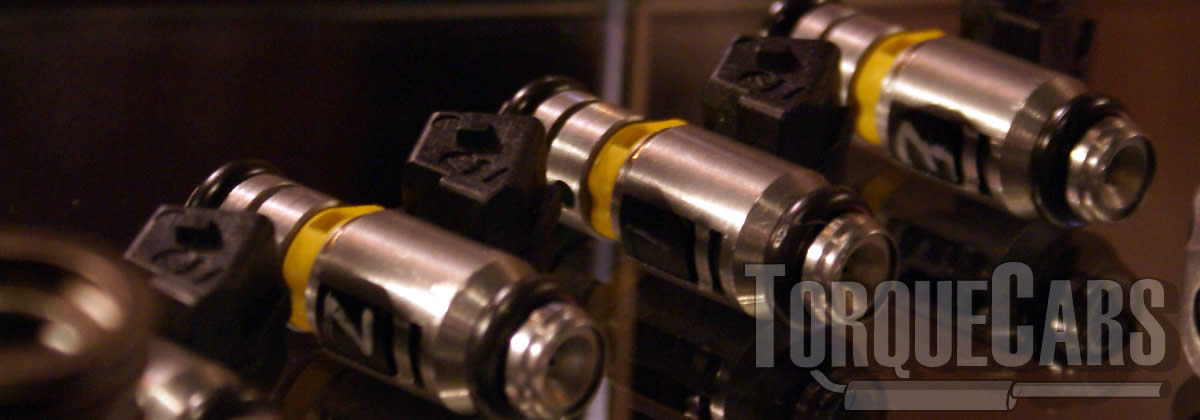Tuning the Hyundai Nu
"Building the best modified Hyundai Nu engine!"
Carref prides itself on providing the latest tips and guides to your modification project.
The Hyundai Nu really good project engines and with a few sensible motorsport mods like remapping, turbo improvements and camshafts you will substantially maximize your driving pleasure.
The Nu blocks appeared in 2011 and replace the earlier Beta engines. They fit into the Hyundai engine lineup between the Gamma and Theta engines.
The Atkinson Cycle version offered better economy and ran cooler thanks to improved thermal efficiency.
This pages aim is look at Nu tuning and report on the greatest modifications for your car.
We rely on our visitors to pass on tips and tell us about their projects and what worked on their car, and this article is the culmination of the feedback we have received. First let us look at the history and specs of this engine and then consider which tuning modifications work best on it.
History of the Engine

- 1.8 L 148 hp @6500 rpm 131 lb⋅ft @4700 rpm
- 2.0 L MPi 164 hp @6500 rpm 148 lb⋅ft @4800 rpm
- 2.0L MPR (Atkinson Cycle) 147–154 hp @5200 rpm 144lbft @4500 rpm
- 2.0 L GDI 174 hp @6500 rpm 157 lb⋅ft @4700 rpm
Nu MPi 1.8L
- 2011–2016 Hyundai Elantra
- 2011–2017 Hyundai i30
- 2013–2016 Kia Forte LX
- 2014– Hyundai Mistra
Nu MPi 2.0L
- 2014–2015 Hyundai Elantra
- 2012–2019 Kia Soul
- 2012– Hyundai i40
- 2013–2019 Kia Forte
- 2014– Kia Sportage
- 2014– Hyundai Mistra
- 2014– Kia Optima
- 2014– Hyundai Sonata
- 2015–Hyundai Tucson
- 2016– Hyundai Creta
- 2019– Kia Seltos
Nu MPi 2.0L Atkinson cycle
- 2018– Hyundai Kona
- 2019– Hyundai Veloster
- 2017– Hyundai Elantra
- 2019– Kia Forte
- 2020– Kia Soul
- 2020– Kia Seltos
GDi 2.0L
- 2014–2016 Hyundai Elantra
- 2012– Kia Soul
- 2013– Kia Carens
- 2012– Hyundai i40
- 2014– Kia Forte EX
- 2014– Hyundai Mistra
- 2016– Kia Sportage
- 2016– Kia Optima
- 2016– Hyundai Sonata Hybrid
- 2017– Hyundai i30
- 2019–present Hyundai Tucson
What are the most effective Nu upgrades
Just because particular upgrades are popular with Nu owners it doesn't mean it is good, we shall concentrate) on the top upgrades that will give your Nu the best power gain for you spend.
Significant gains on the Nu can be made from cam upgrades. Altering the cam profile alters the intake and exhaust durations on the engine and can dramatically change the power band and power output.

Fast road cams usually bump the power throughout the rev range, you may sacrifice a little low down bhp but your high end rpm power will be lifted.
Competition cams, bump the high end rpm power band but as a result the car will not idle smoothly and low end power nearly always suffers.
A Motorsport camshaft won't do well if driving around busy urban areas.
You should ideally optimize your bhp range to your usage of the car so for a car driven daily stick with a fast road Nu camshaft
Each engine responds better to less aggressive camshaft durations check your engine on a rolling road.
The engine timing and fuelling also have a large bearing on the torque gains you'll make.
Extending exhaust or intake durations can alter the torque band and on most engines the exhaust and intake durations do not need to match, although most cams and tuners use matched pairs there are some advantages to extending the intake or exhaust durations.
Please watch our introduction Video tutorial to car tuning. Be sure to subscribe and support our new channel.
How to tune your car
- Improve the handling
Focus on Suspension improvements, such as coilovers and make sure the bushings are in good order and that the alignment is correct. Then focus on improving the brakes, with a big disk brake conversion kit and fast road brake pads.
- Remove restrictions
Focus on the intake and exhaust with filters being the common point of restriction in a tuned car. Intercoolers may also become restrictive on turbo engines so this may also need to be uprated.
- Burn more fuel & air
Increase the fuelling so it matches the air coming into the engine. The ratio is important so you need to improve the fuel pump and injectors, so the head mods, big valve conversions, fast road camshafts and forced induction upgrades extra supply of air is adequately met.
- Test and replace any weak parts
Weak areas are commonly the clutch, the turbocharger and pistons and crankshaft in a highly tuned engine. Makes sure these components will cope with your power aspirations.
- The Tune or Remap
A cars ECU controls the fuel, timing, spark and even the turbo in some cases, so to fully extract your gains you should remap the car last and this will fully release the power. Some cars are easy to map, and others require piggyback ECU's or aftermarket ECU's but this is the most vital step of your tuning project.
Modifying to Stage 1:
Intake headers, Sports exhaust manifold, Panel air filters, Fast road camshaft, Drilled & smoothed airbox, Remaps/piggy back ECU.
Modifying to Stage 2:
Ported and polished head, high flow fuel injectors, Fast road cam, Sports catalyst & performance exhaust, induction kit, fuel pump upgrades.
Modifying to Stage 3:
Internal engine upgrades (head flowing porting/bigger valves), Twin charging conversions, Competition cam, Adding or Upgrading forced induction (turbo/supercharger), Crank and Piston upgrades to alter compression, Engine balancing & blueprinting.
ECU flashing should help to fully realize the full potential of all the parts you've done to your Nu.
It will usually give around 30% more power on turbocharged vehicles and you can expect to see around 15% on NASP engines, but your results often vary depending on the parts you've fitted and the condition of your engine.
It is the whole point to any performance tuning task to get fuel and air into the Nu engine
The intake plenum flow the air during the suck phase from the air filter and allow it to be fed into the engine and mixed with fuel.
Structure and flow characteristics of the Intake headers can make a substantial effect on to fuel atomisation and engine efficiency on the Nu.
Commonly we find the intake headers are in desperate need of performance upgrades, although a few makers provide well optimised intake headers.
Big valve conversions on the Nu, getting port work and head flowing will also raise power, the fantastic side effect is it will afford you a better power increase on other mods.

Which turbo upgrades are best?

NASP engines need quite a lot of work when you add a turbo, so we have a separate guide to help you take into account the pros and cons of going this route on your Nu
The more air you can get into an engine, the more fuel it can burn and uprating the induction with a turbocharger upgrade makes massive power gains.
When your motor is turbocharged, tuning mods are going to make more power and we find turbo charged engines are made using many forged and stronger components.
There are tuning limits for every engine, with some being very over engineered and some only able to handle stock power
Discover these restrictions and install stronger pistons, crank and engine components to cope with the power.
We see many mechanics spending a lots of money on turbocharger upgrades on the Nu only to watch the engine throw a rod soon after it's been completed.
Bigger capacity turbo chargers commonly suffer low end lag, and small turbo chargers spool up really quickly but don't have the peak end power band gains.
We are pleased that the selection of turbos is always developing and we now see variable vane turbos, permitting the vane profile is altered according to speed to lower lag and increase top end performance.
Twin scroll turbos divert the exhaust gases into two channels and push these at differently profiled vanes in the turbo. They also help the scavenging effect of the engine.
It is not unusual that there is a limitation in the air flow sensor AFM/MAF on these engines when considerably more air is being drawn into the engine.
We see 4 bar air sensors coping with quite large power gains, whereas the OEM air sensor sapped power at a much lower level.
Adding a supercharger or additional turbo will make large performance gains, although harder to get working. We have a twincharger performance adding guide if you want to read more.
Fuelling
You will need to ensure that the engine is not starved of fuel so should ramp up the fuelling when you start extending past 20% of a power increase. We would recommend you to over specify your flow rate on the injectors.
We would recommend you to over specify your flow rate on the injectors.
The rule of thumb is to add 20% to the flow rate when specifying an injector, this allows for injector deterioration and provides a little spare capacity should the engine require more fuel.
We think this one is common sense, but you'll need to match your fuel injector to the type of fuel your car uses as well.
All the following flywheel power targets will assume an injector duty cycle of 80% and a base of 58psi of fuel pressure at idle.
4 Cylinder turbocharged engines
- 58 PSI 340cc/min 200hp
- 58 PSI 511cc/min 300hp
4 Cylinder NASP engines
- 58 PSI 285cc/min 200hp
- 58 PSI 426cc/min 300hp
4 Cylinder supercharged engines
- 58 PSI 312cc/min 200hp
- 58 PSI 468cc/min 300hp
Choosing the right performance exhaust
One of the most common mistakes and problems we see in tuning projects is usually down to the exhaust, or rather a poorly chosen exhaust for your engine.
Only look to uprate your exhaust if your exhaust is creating a flow problem.
On most factory exhausts you'll see your flow rate is good even on modest power gains, but when you start pushing up the power levels you will need to get a better flowing exhaust.
Sports exhausts will certainly help air flow from the engine but do not go too big or you could will reduce the flow rate. Stick to 1.5 to 2.5 inches as a rule of thumb.
Typically exhaust restrictions can be located the catalyst and filters installed, so adding a better flowing high performance alternative will help avoid this restriction.
Weak spots Issues & problem areas on the
The engines are generally reliable and solid as long as they are regularly serviced and maintained.
Regular oil changes are vital on the , especially when tuned and will help extend the life and reliability of the engine.
For more information on Tuning your engine please join us in our friendly forum where you can discuss tuning options in more detail with our owners. It would also be worth reading our unbiased tuning articles to get a full grasp of the benefits and drawbacks of each modification.
Please help us improve these tips by sending us your feedback in the comments box below.
We love to hear what our visitors have got up to and which modifications work best for them on each model of car. Comments are used to improve the accuracy of these articles which are continually updated.
If you liked this page please share it with your friends, drop a link to it in your favourite forum or use the bookmarking options to save it to your social media profile.
Check out TorqueCars new YouTube channel, and see their awesome new content...
Feedback
Please use our forums if you wish to ask a tuning question, and please note we do not sell parts or services, we are just an online magazine.
Help us improve, leave a suggestion or tip
